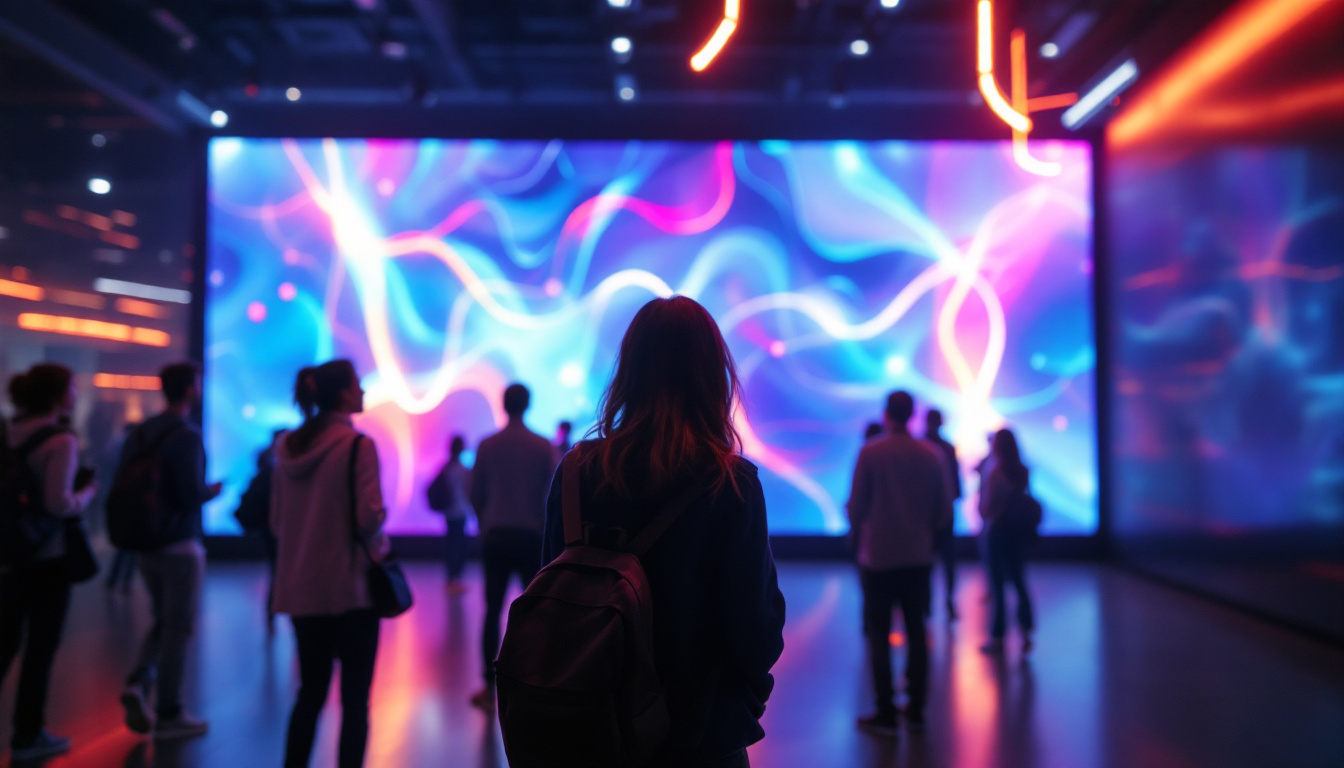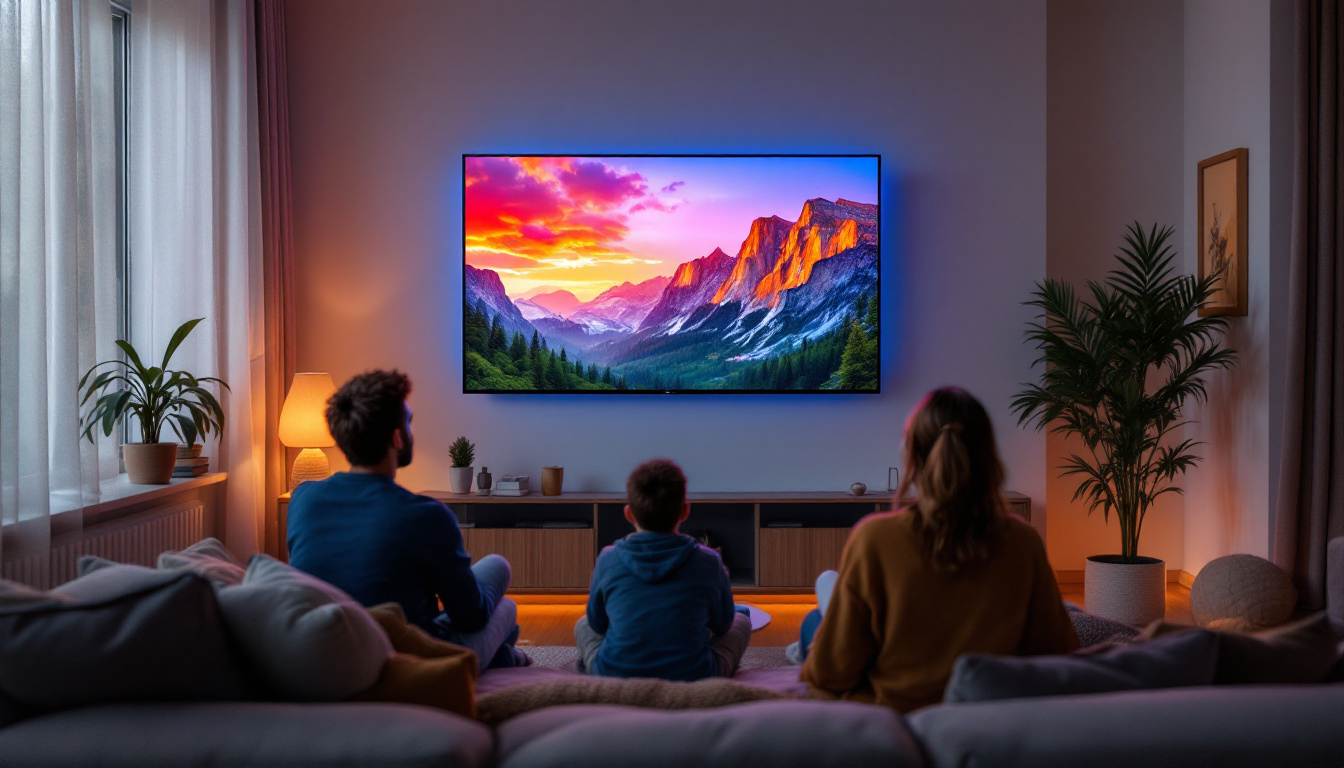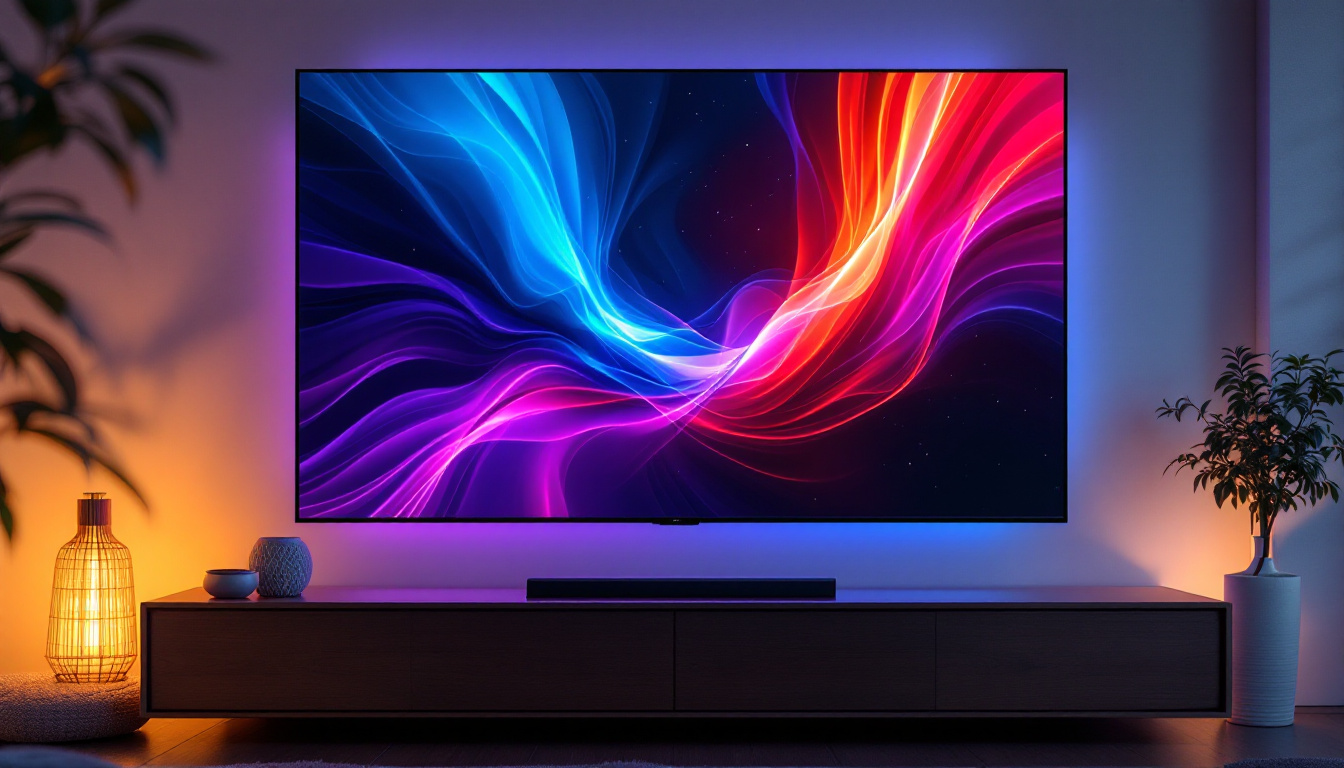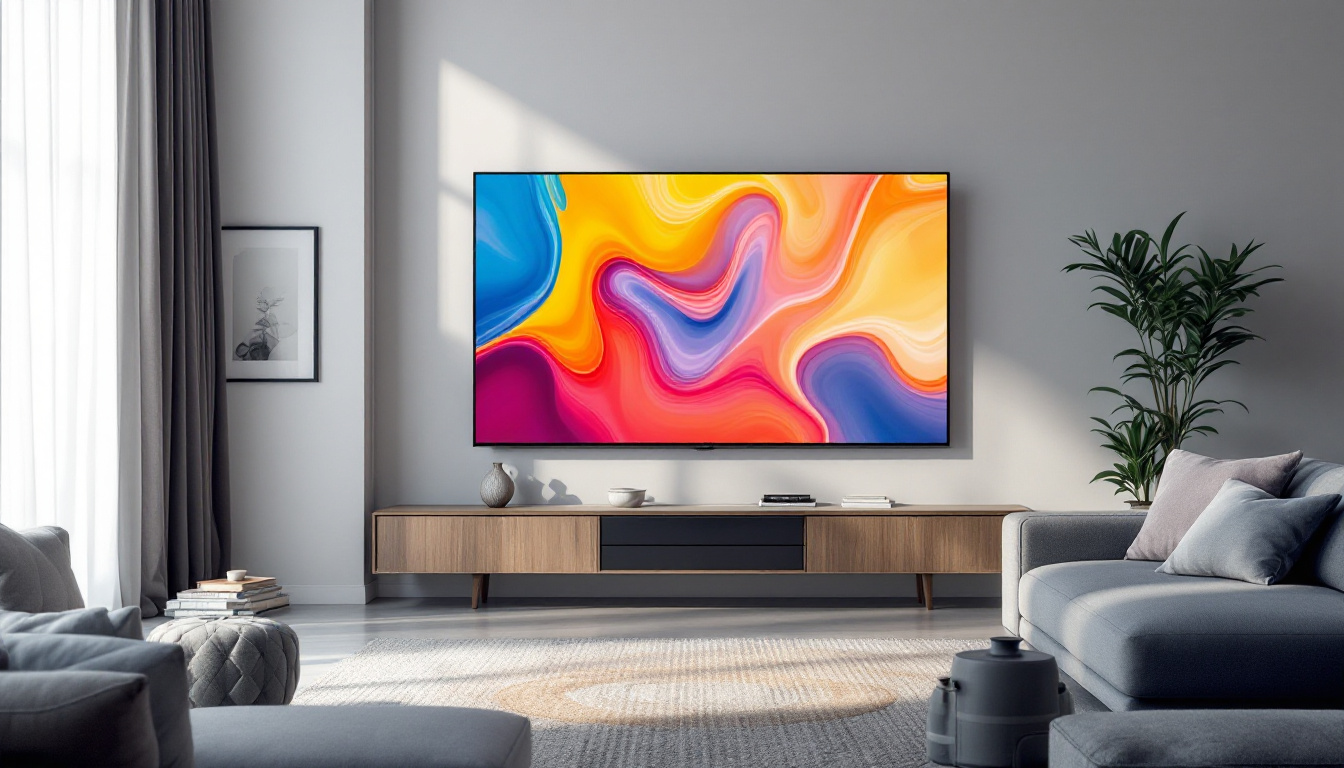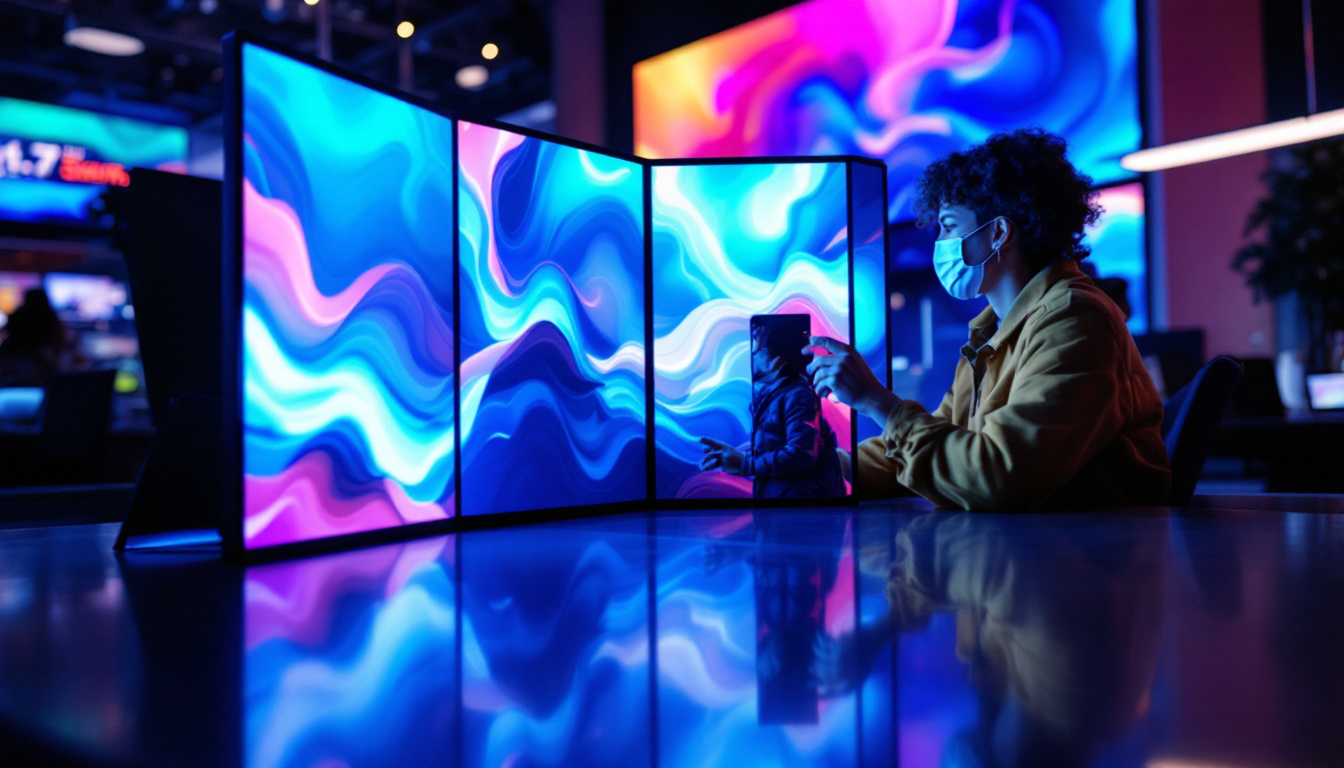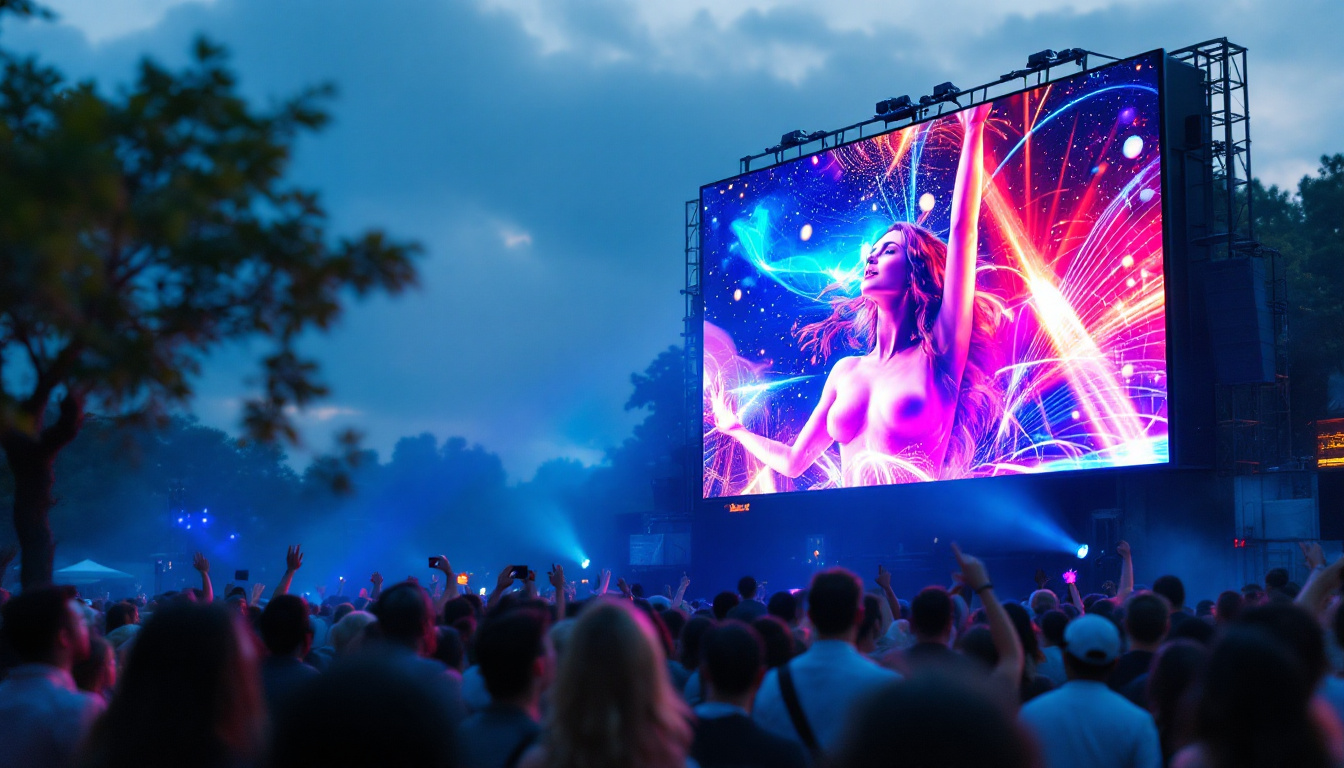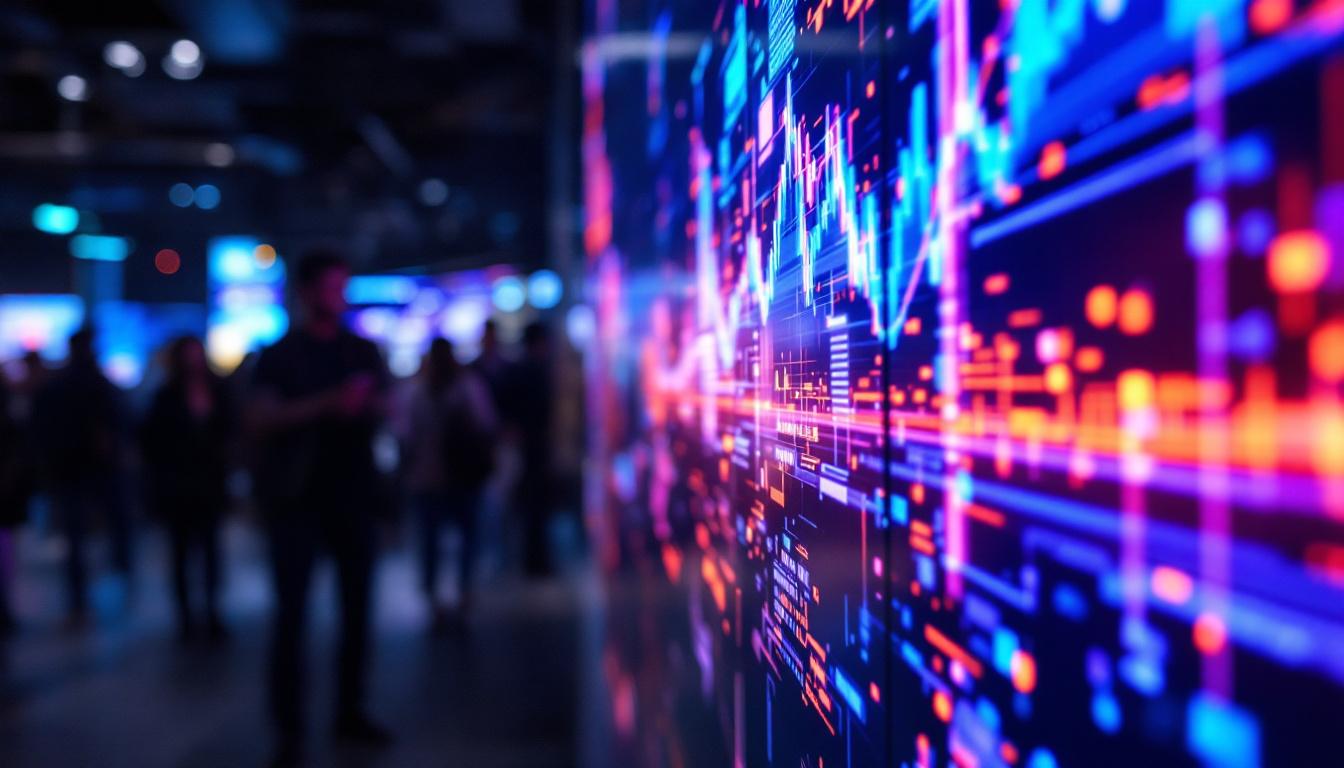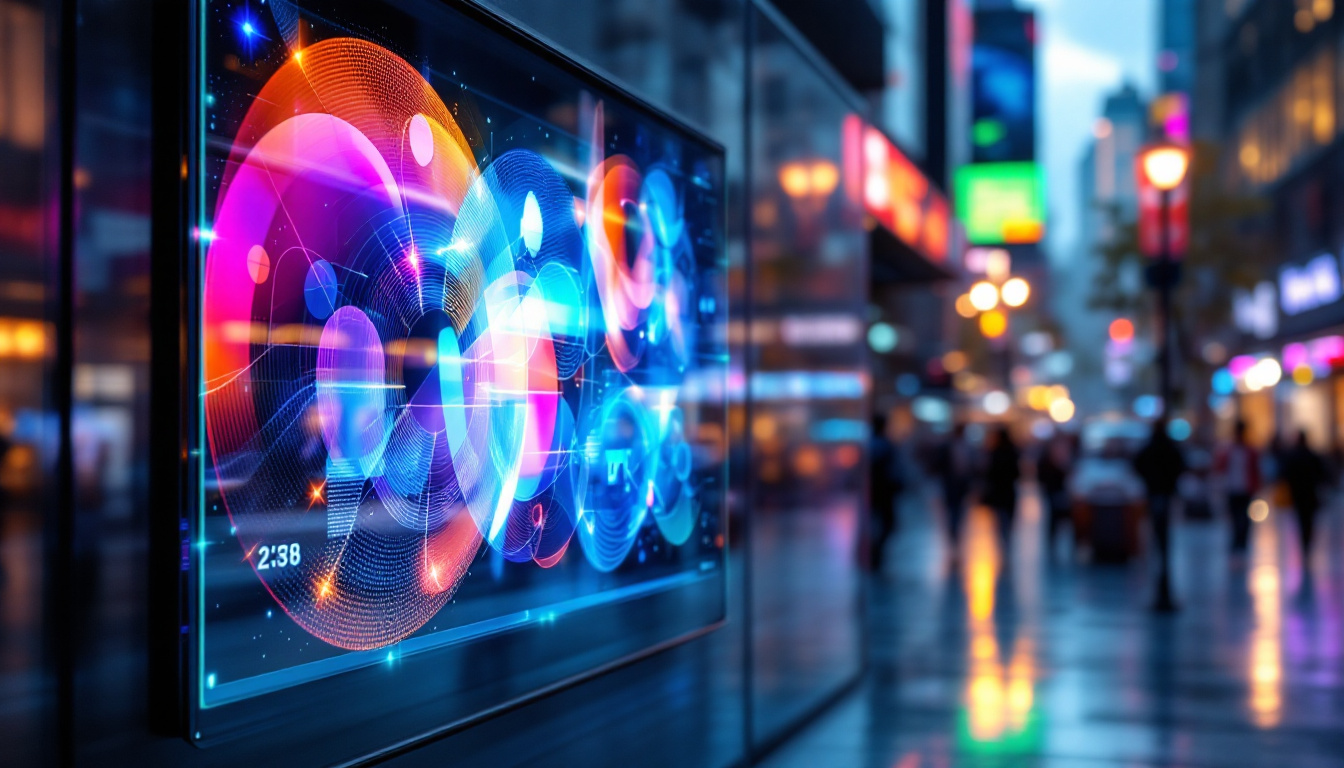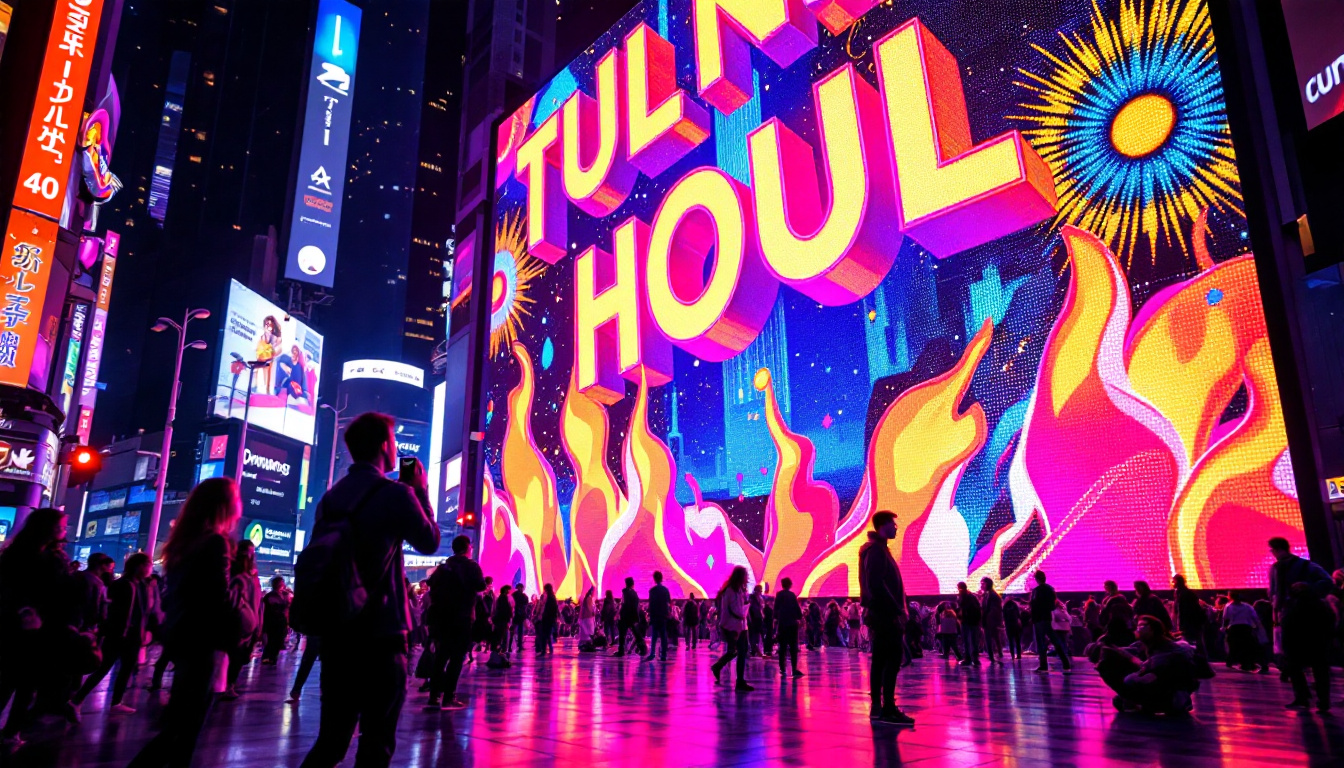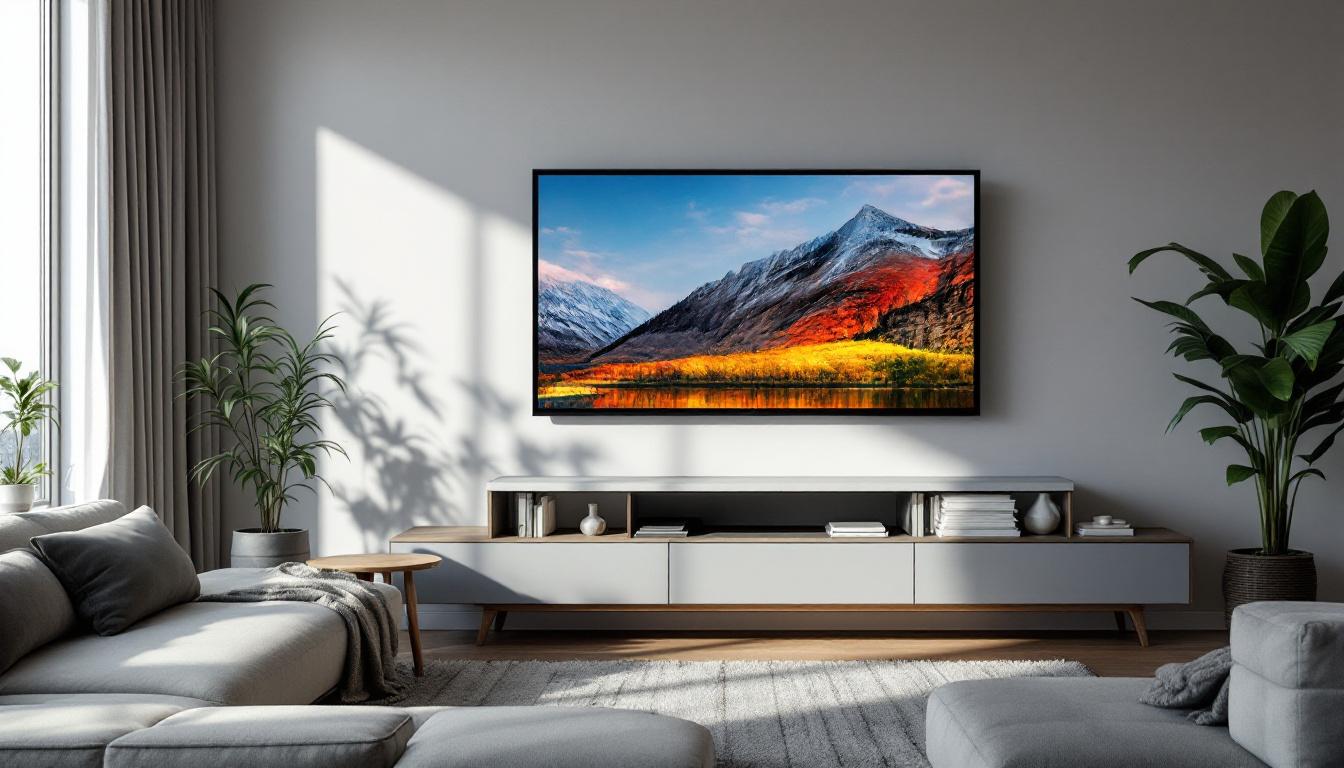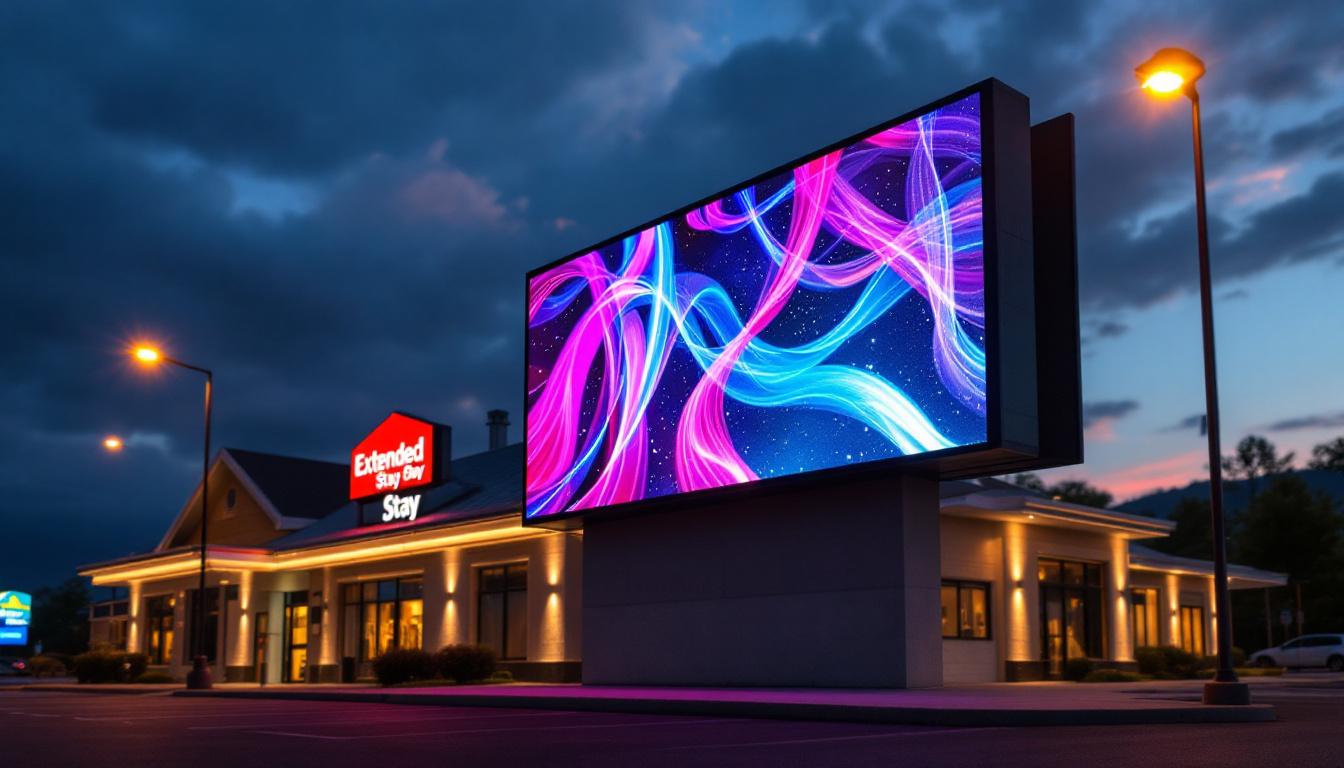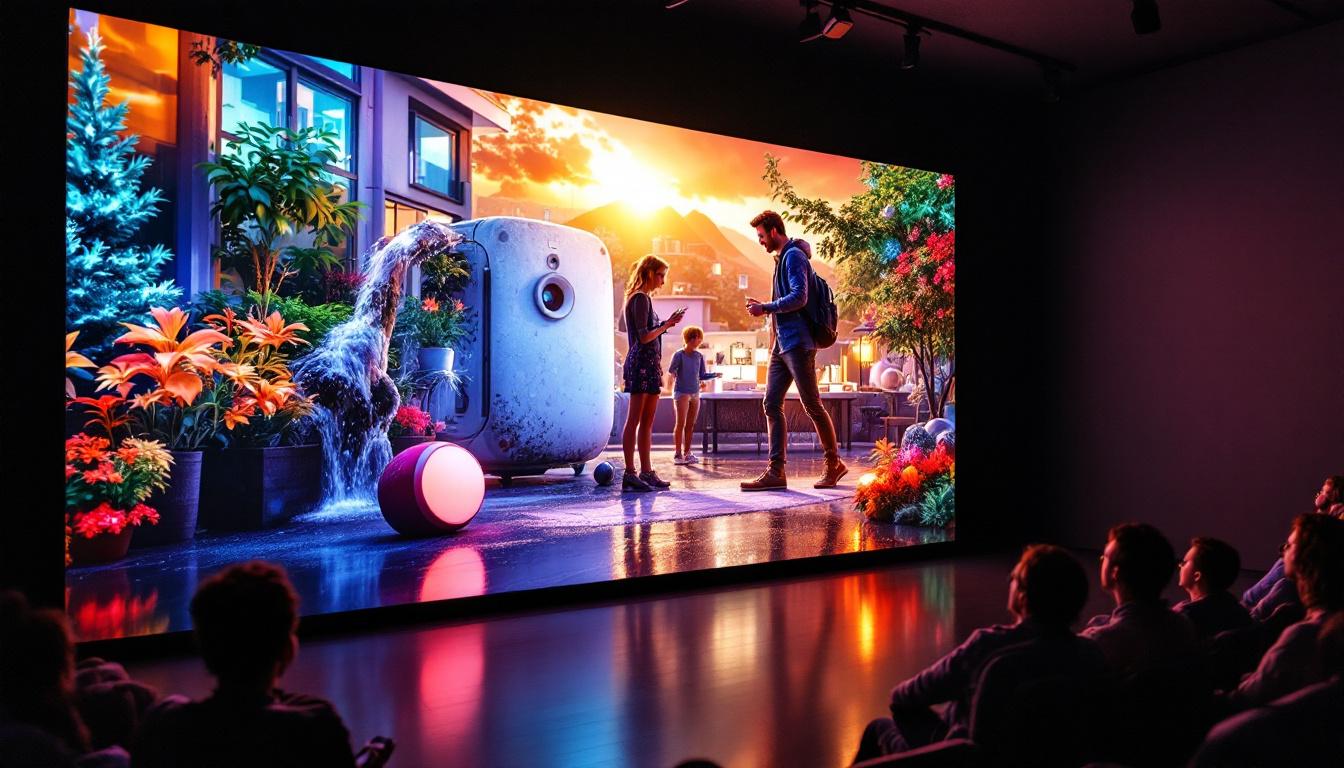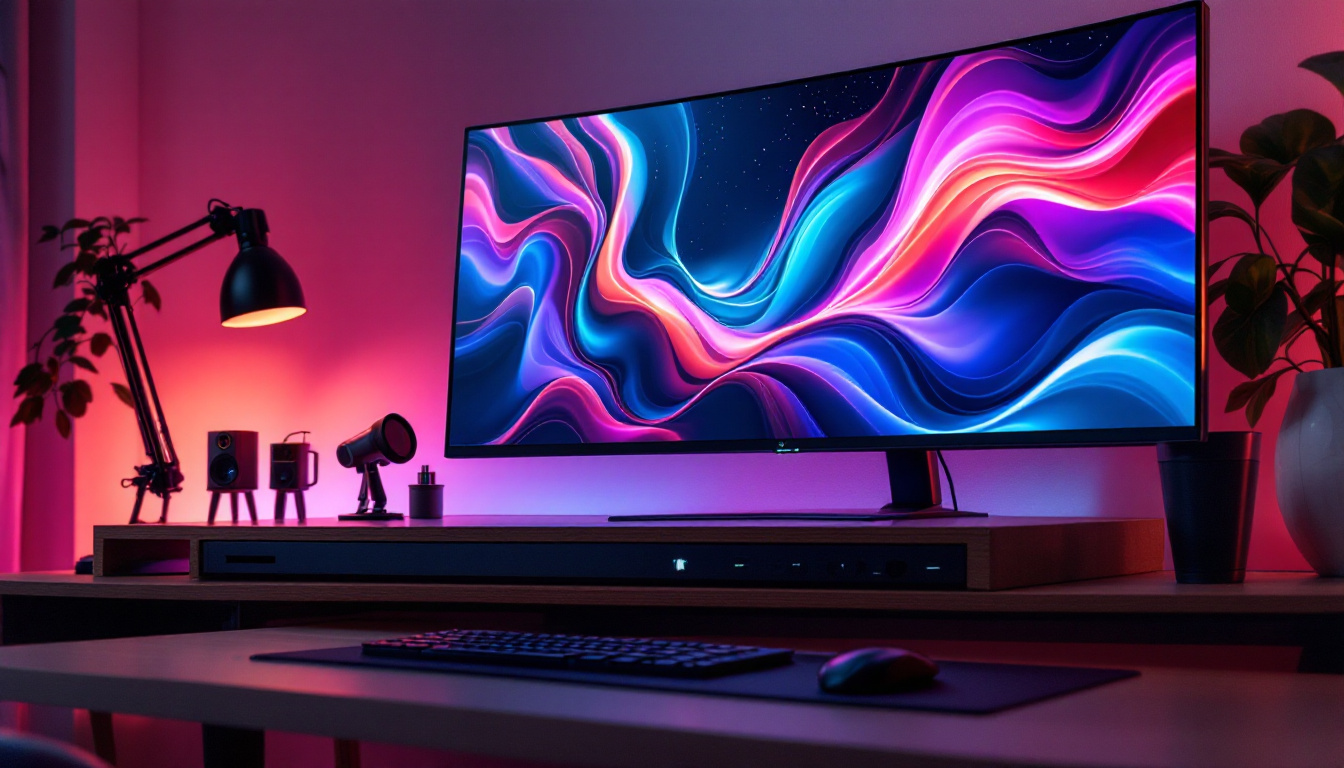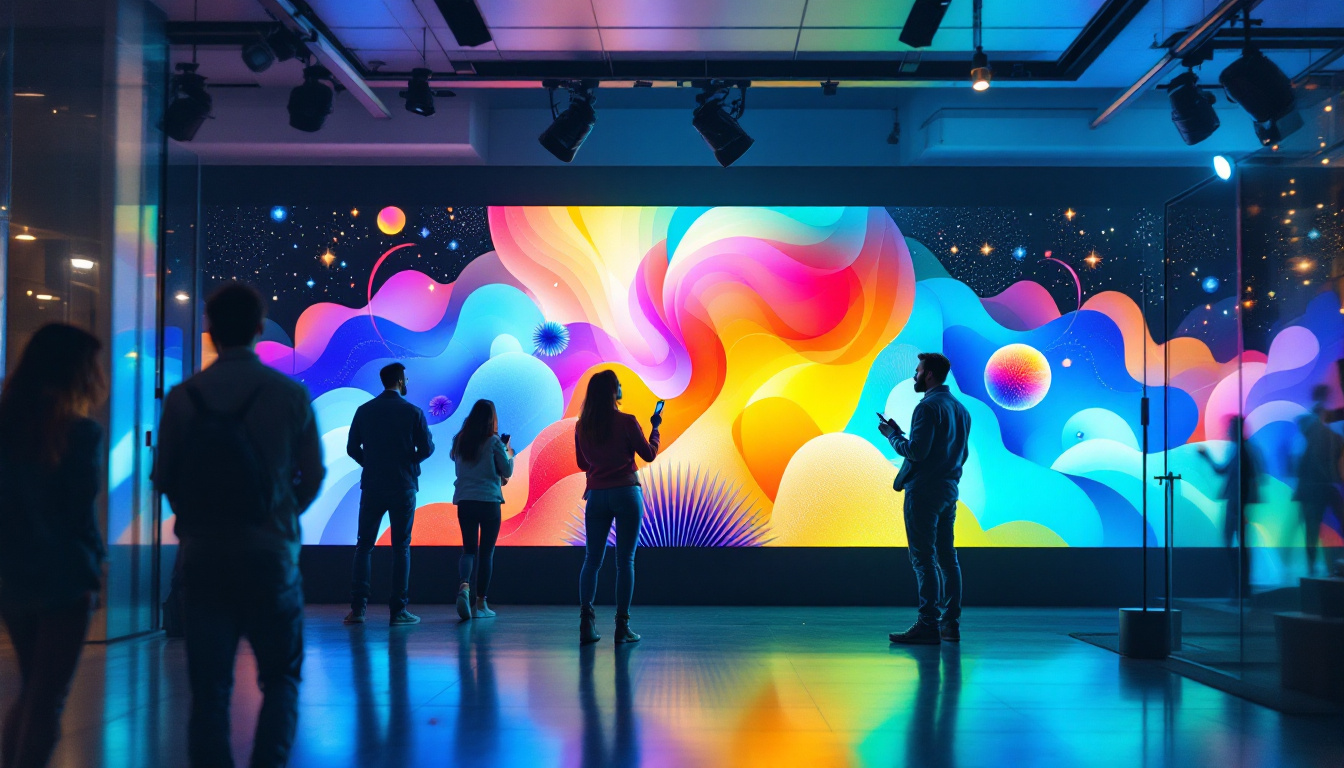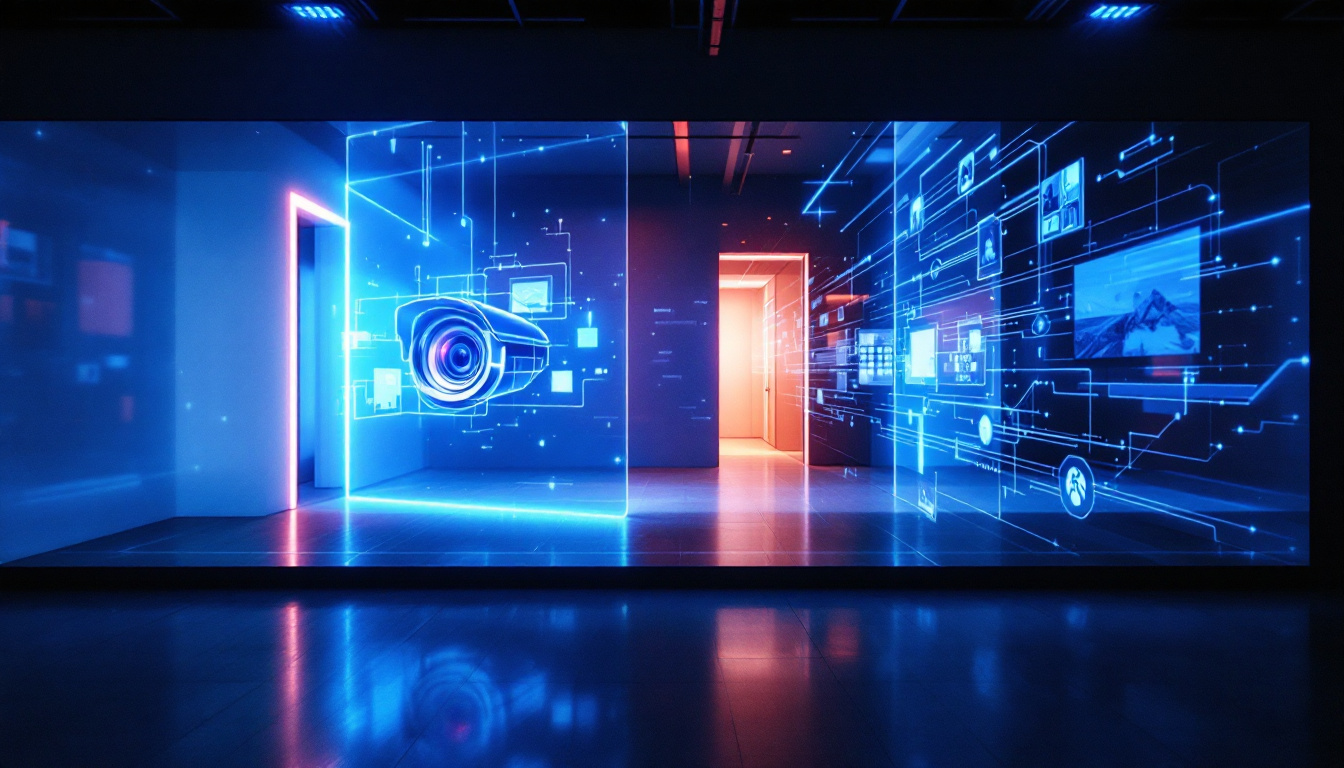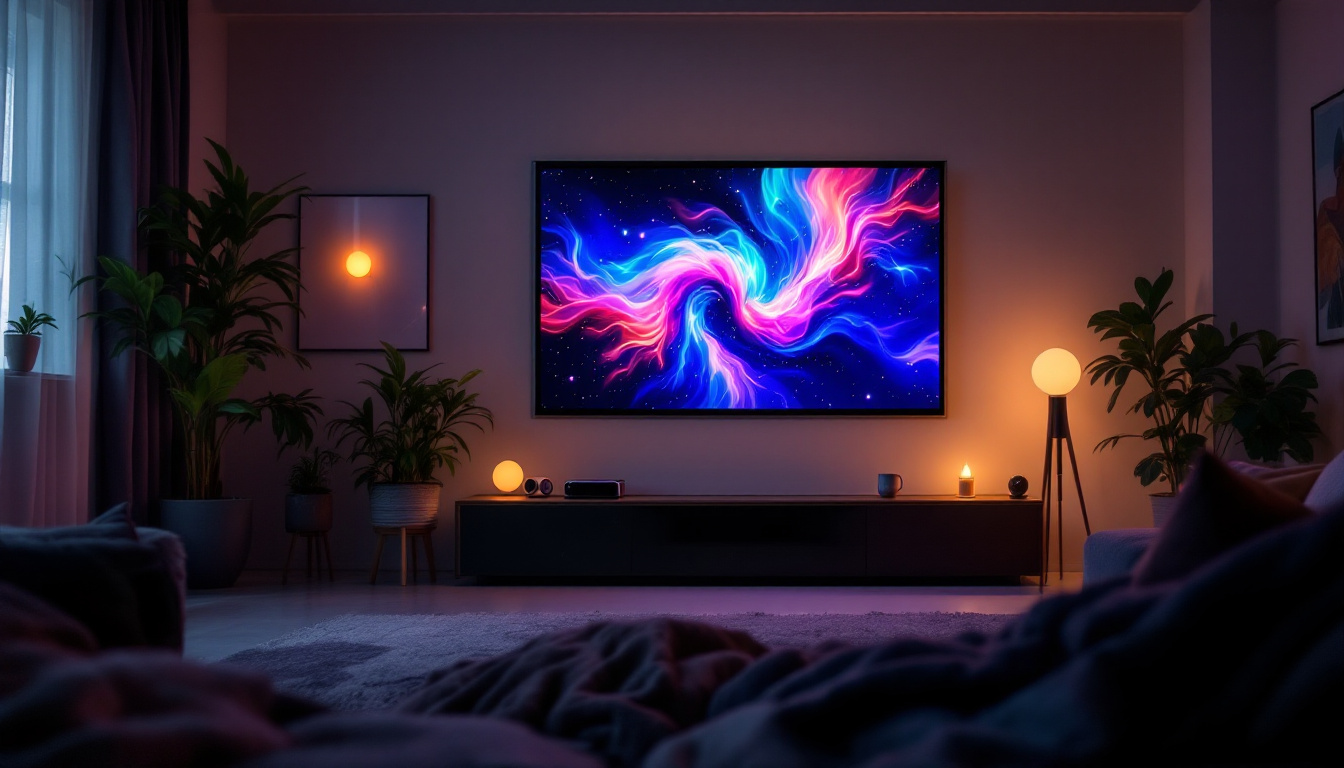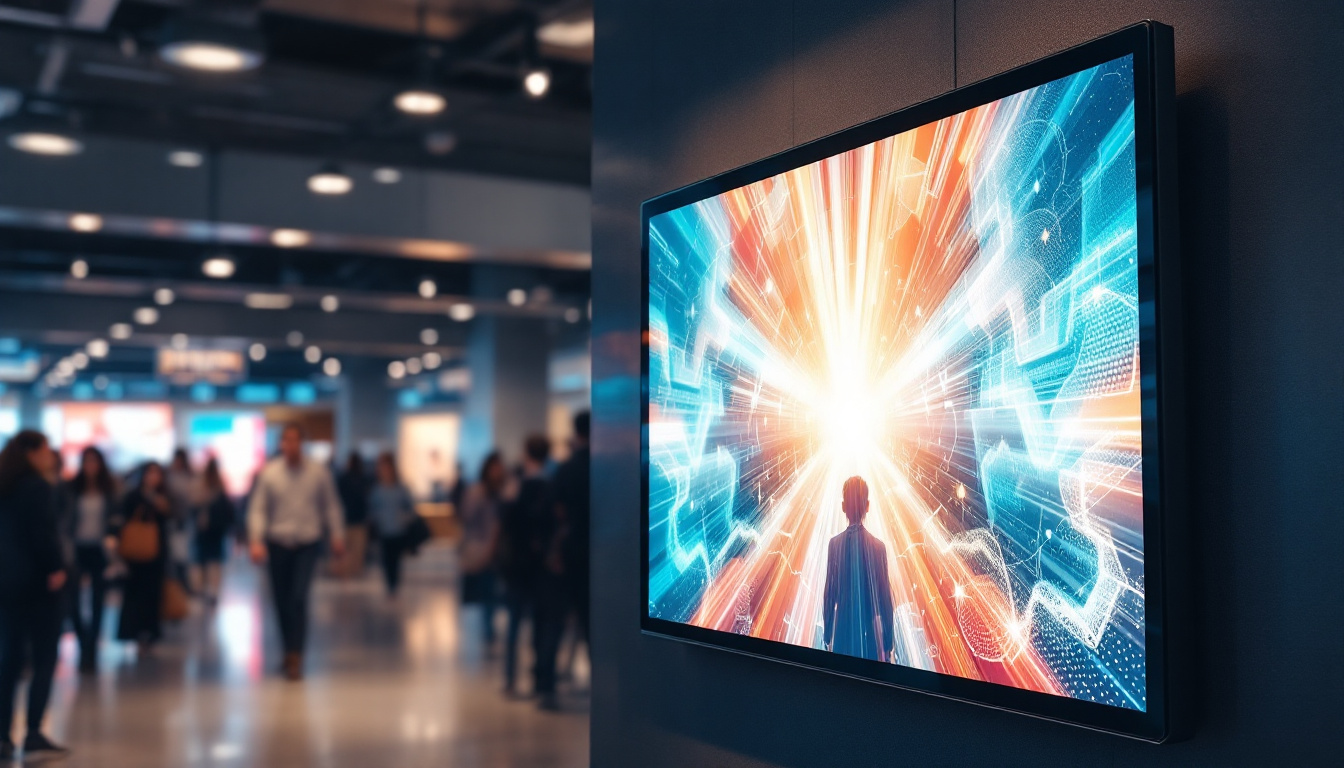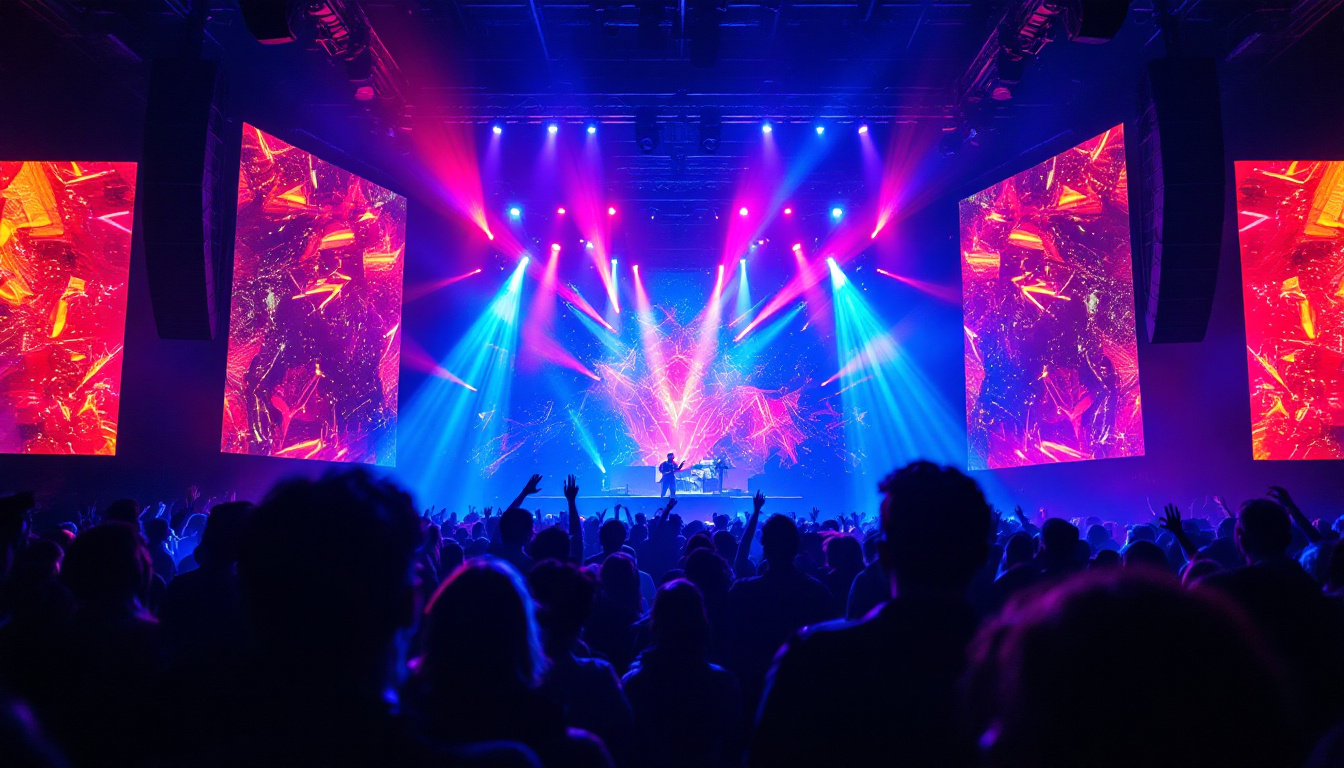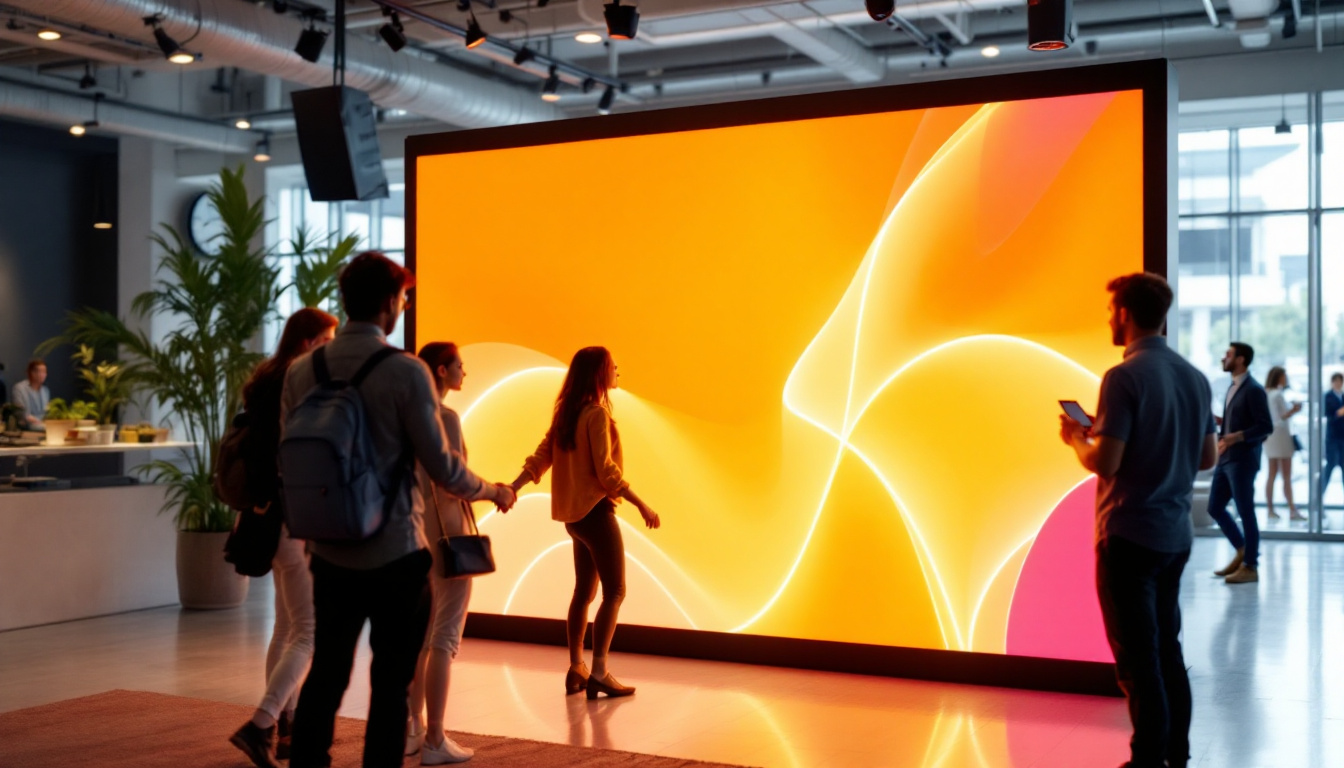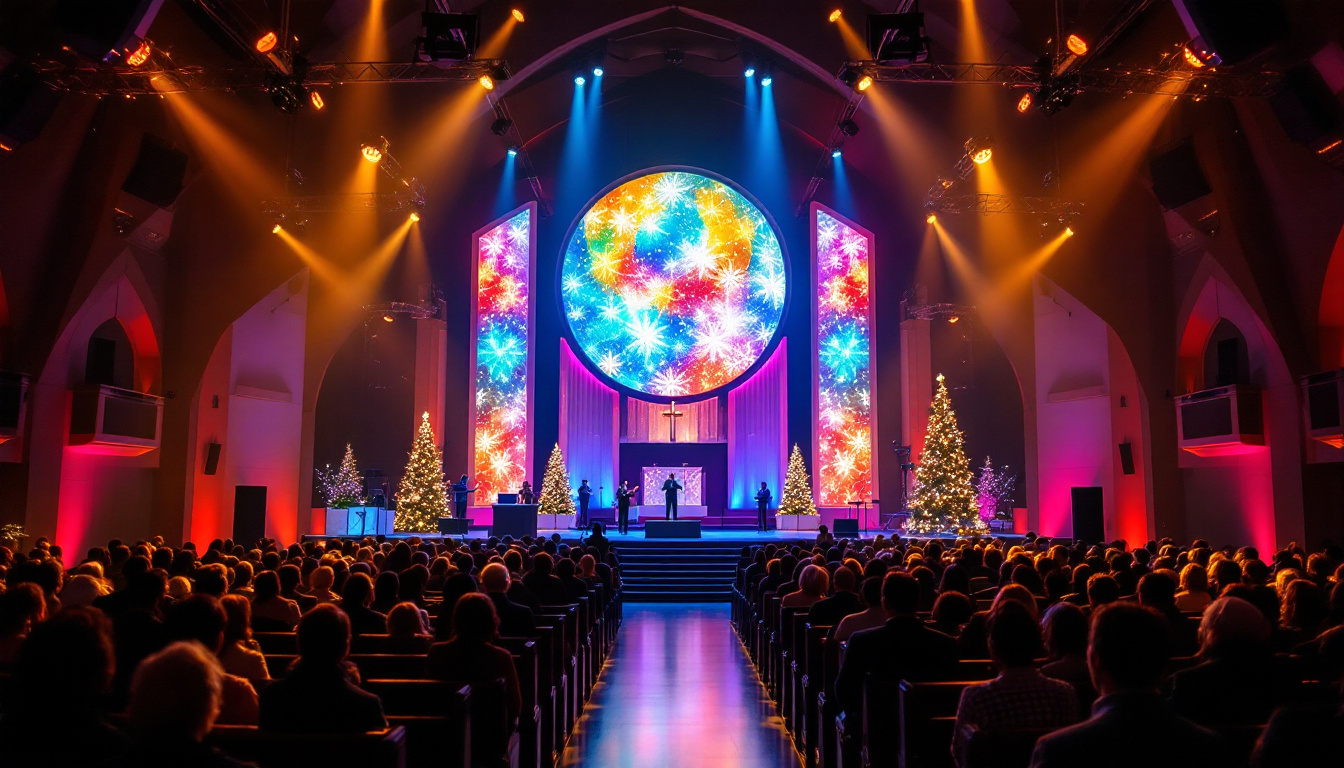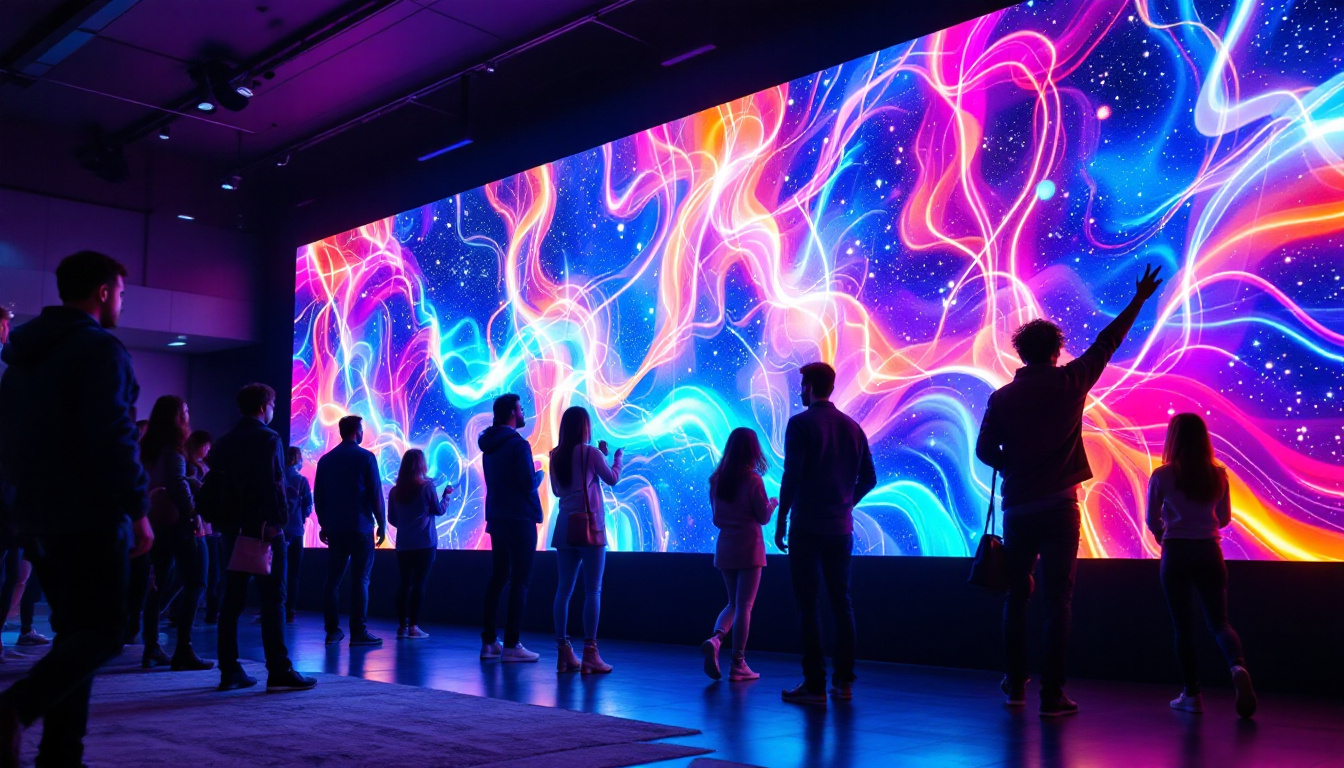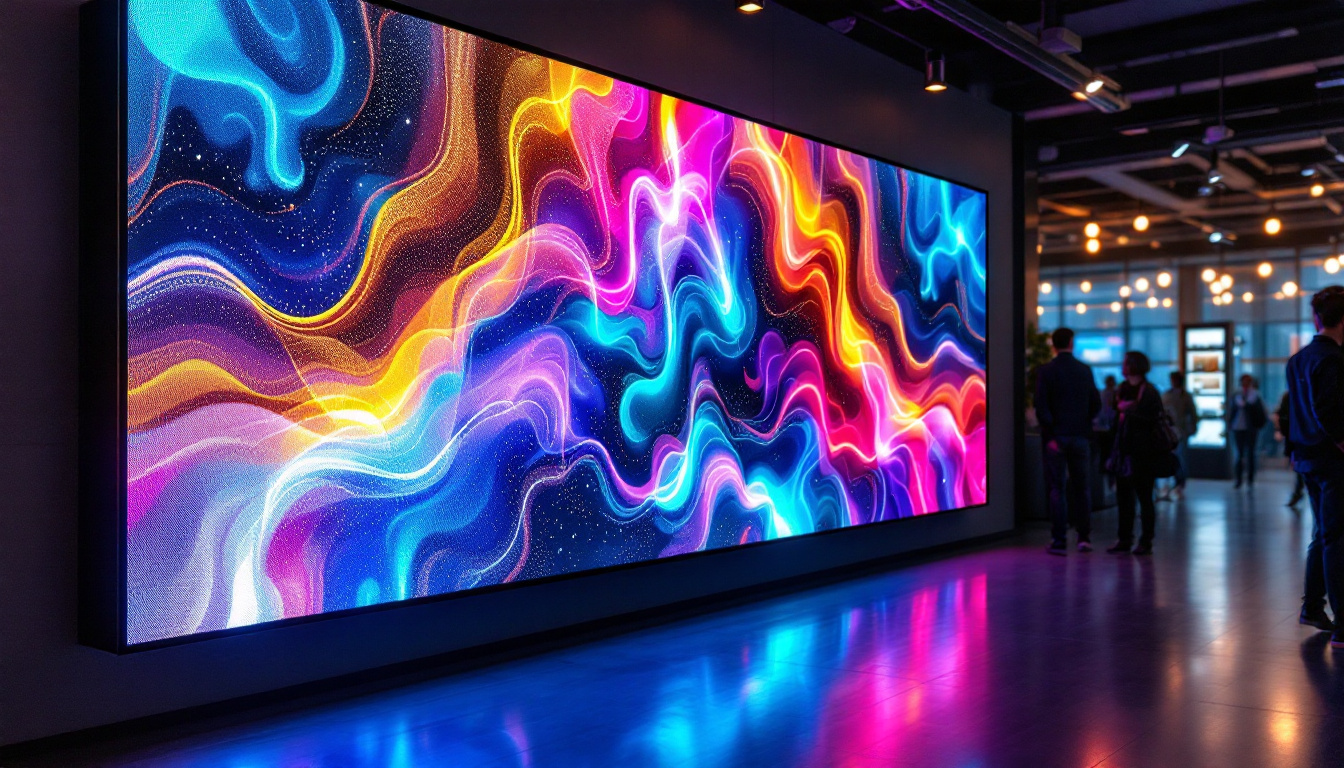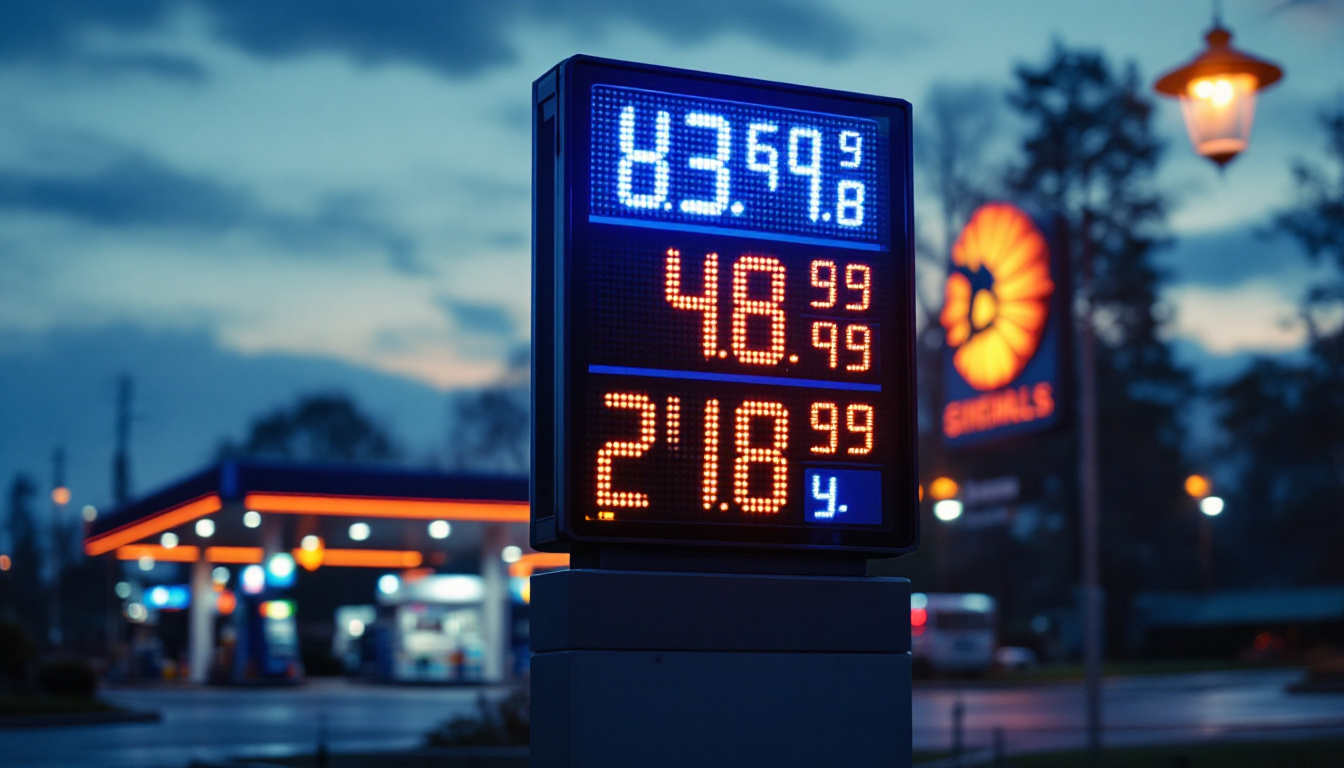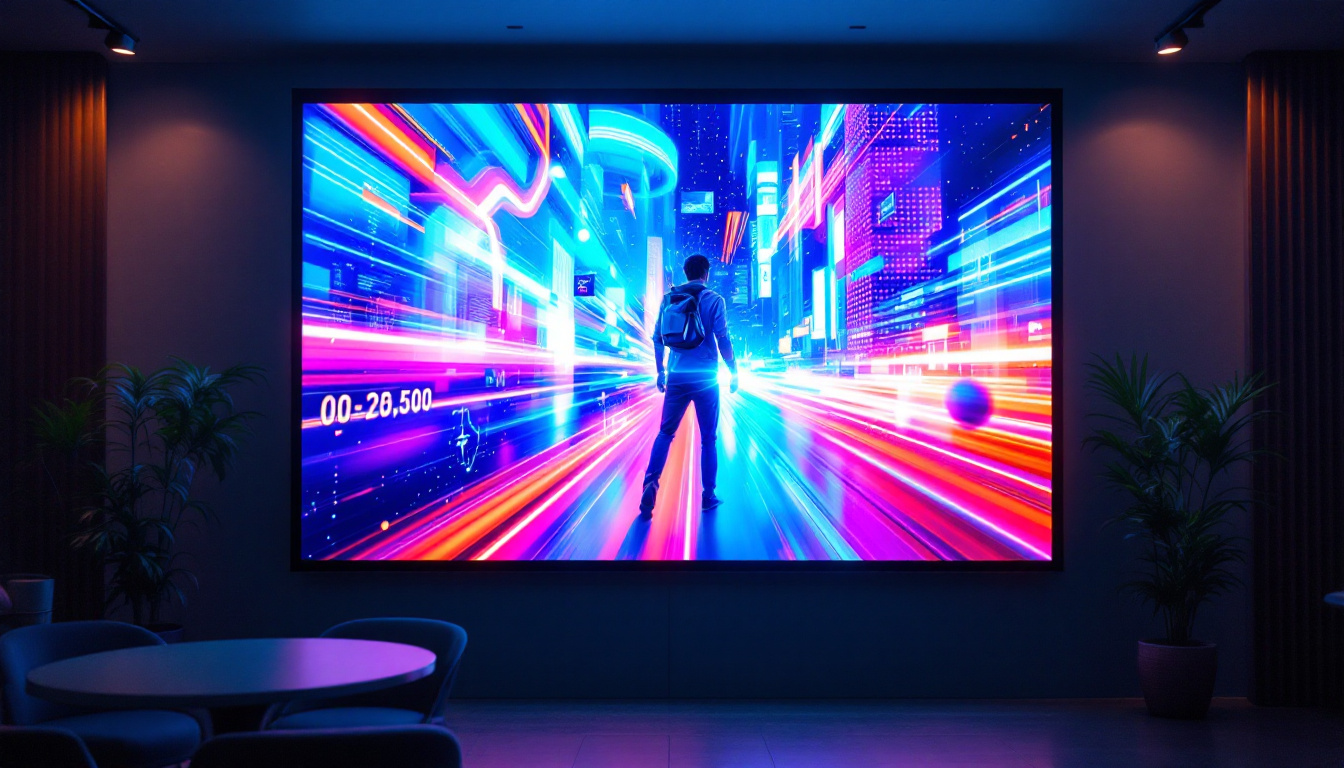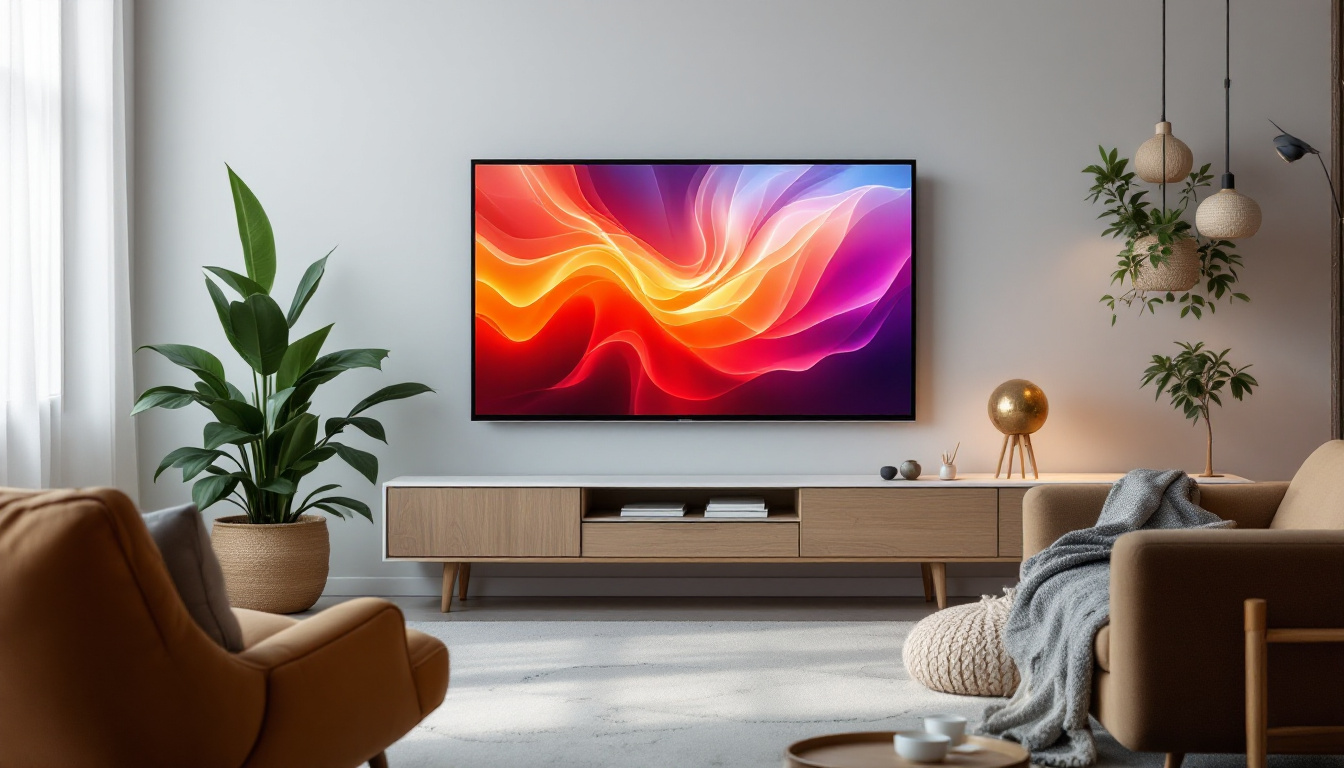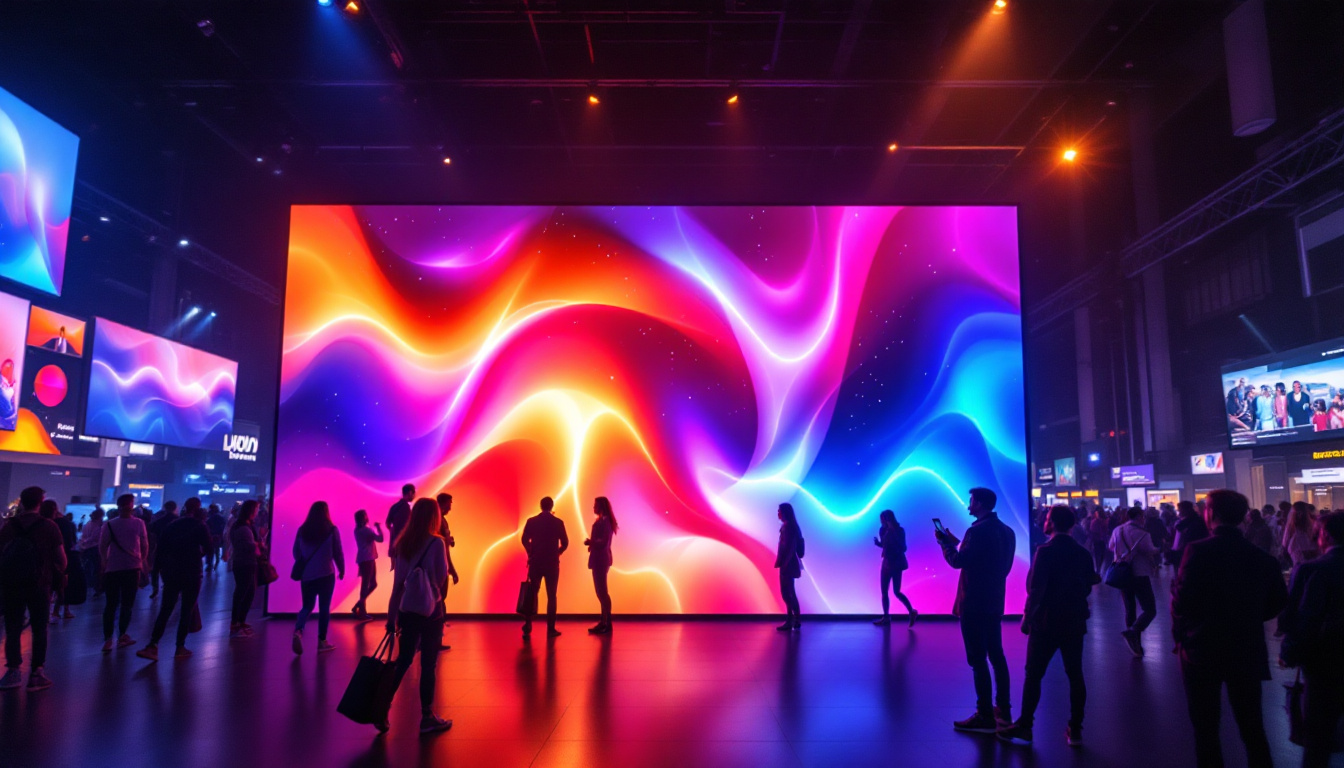In the rapidly evolving world of technology, immersive display solutions have emerged as a cornerstone for various industries. Among these solutions, LED displays stand out due to their vibrant colors, energy efficiency, and versatility. This article delves into the intricacies of LED displays, exploring their technology, applications, benefits, and future trends.
Understanding LED Display Technology
LED, or Light Emitting Diode, displays utilize semiconductor technology to produce light. Unlike traditional displays that rely on backlighting, LED displays emit their own light, resulting in brighter images and deeper blacks. This fundamental difference is what sets LED technology apart and enhances the viewing experience. The efficiency of LED technology also contributes to lower energy consumption, making it an environmentally friendly choice for consumers and businesses alike.
The Basics of LED Technology
At its core, an LED display consists of numerous tiny diodes that can emit various colors when an electric current passes through them. These diodes are arranged in a matrix to form pixels, which combine to create images. The primary colors used in LED displays are red, green, and blue (RGB). By adjusting the intensity of each color, a wide spectrum of colors can be achieved, allowing for stunning visuals. This color mixing capability is not only crucial for everyday viewing but also plays a significant role in professional applications, such as graphic design and video production, where color accuracy is paramount.
There are two main types of LED displays: passive and active matrix. Passive matrix displays are simpler and less expensive but offer lower image quality and slower refresh rates. Active matrix displays, on the other hand, provide superior performance and are commonly used in high-end applications. The active matrix technology allows for quicker response times, which is essential for fast-moving images, making them ideal for gaming and high-definition video playback.
Types of LED Displays
LED displays come in various forms to cater to different needs. The most common types include:
- Direct View LED Displays: These displays are composed of individual LED modules that are directly visible to the viewer. They are often used in large outdoor billboards and digital signage. Their ability to maintain brightness in direct sunlight makes them a popular choice for advertising and public information systems.
- LED Backlit LCD Displays: These displays use LEDs to illuminate an LCD panel. They are prevalent in televisions and computer monitors, providing enhanced brightness and contrast. The backlighting technology also allows for thinner designs, making modern screens sleeker and more aesthetically pleasing.
- Organic LED (OLED) Displays: A newer technology, OLED displays use organic compounds to emit light. They offer exceptional color accuracy and flexibility, making them ideal for smartphones and high-end televisions. The ability of OLED displays to achieve true blacks—by turning off individual pixels—results in a more immersive viewing experience, particularly in dark scenes.
In addition to these common types, there are also specialized LED displays, such as transparent LED screens that allow for creative installations in retail environments, and flexible LED displays that can be bent or shaped to fit unique designs. These innovations continue to expand the possibilities of LED technology, pushing the boundaries of how we interact with visual media in our daily lives.
Applications of LED Displays
LED displays have found applications across a wide range of industries. Their versatility and adaptability make them suitable for various environments, from retail spaces to large-scale events.
Advertising and Marketing
One of the most prominent applications of LED displays is in advertising. Digital billboards and signage utilize LED technology to capture the attention of passersby with dynamic content. The ability to change advertisements in real-time allows businesses to target specific audiences and promote timely offers.
Furthermore, LED displays can be integrated into storefronts, enhancing the customer experience. Interactive displays can engage customers, providing information and encouraging purchases. This interactivity is a game-changer in retail marketing.
Additionally, LED displays can be strategically placed in high-traffic areas to maximize visibility. Their bright, vibrant colors and high contrast make them stand out even in daylight, ensuring that advertisements are seen by a larger audience. Brands can also leverage data analytics to assess the effectiveness of their campaigns, adjusting content based on viewer engagement and demographics. This level of adaptability not only boosts sales but also fosters a deeper connection between the brand and its consumers.
Entertainment and Events
In the entertainment industry, LED displays are essential for concerts, festivals, and sporting events. Large-scale LED screens provide audiences with immersive visuals, enhancing the overall experience. These displays can be configured in various shapes and sizes, allowing for creative stage designs and presentations.
Moreover, LED technology has transformed the way live events are produced. high-definition video walls can display multiple feeds simultaneously, providing viewers with a comprehensive view of the action. This capability is invaluable for large venues where visibility may be limited.
In addition to live events, LED displays are increasingly used for broadcasting and streaming purposes. They can be integrated with live feeds to create a seamless viewing experience, allowing fans to enjoy events from the comfort of their homes. The flexibility of LED technology also enables event organizers to create stunning visual effects, such as synchronized light shows and animations, further captivating audiences and enhancing the overall atmosphere.
Corporate and Educational Use
LED displays are increasingly being adopted in corporate environments for presentations and meetings. High-resolution screens facilitate clear communication and collaboration, making them ideal for video conferencing and training sessions. The visual impact of LED displays can significantly enhance the effectiveness of presentations.
In educational settings, LED displays are used in classrooms and auditoriums. They serve as interactive learning tools, allowing educators to present information in engaging ways. The ability to incorporate multimedia content helps students retain information better and fosters a more dynamic learning environment.
Moreover, the integration of LED displays in educational institutions extends beyond traditional classrooms. They are increasingly being used in outdoor spaces for school events, announcements, and community engagement. These displays can serve as platforms for showcasing student achievements, promoting school events, and even broadcasting live feeds of important gatherings. This not only enhances school spirit but also strengthens the connection between the school and the local community, making education a more collaborative and inclusive experience.
Benefits of LED Displays
The advantages of LED displays extend beyond their vibrant visuals. They offer a range of benefits that make them a preferred choice for many applications.
Energy Efficiency
One of the most significant benefits of LED displays is their energy efficiency. Compared to traditional display technologies, LED displays consume significantly less power, resulting in lower energy costs. This efficiency is particularly advantageous for businesses that operate large displays continuously.
Additionally, the longevity of LED technology contributes to its sustainability. LED displays have a longer lifespan than traditional displays, reducing the need for frequent replacements and minimizing waste.
High Brightness and Contrast
LED displays are known for their high brightness levels, making them suitable for both indoor and outdoor applications. The ability to maintain image quality in bright sunlight is a crucial factor for outdoor advertising and event displays.
Furthermore, the contrast ratio of LED displays allows for deeper blacks and more vibrant colors. This quality enhances the viewing experience, making images appear more lifelike and engaging.
Flexibility and Customization
LED displays offer unparalleled flexibility in terms of design and installation. They can be manufactured in various shapes and sizes, allowing for creative installations that fit any space. This adaptability is particularly beneficial for businesses looking to create unique branding experiences.
Moreover, LED technology enables seamless integration with other systems, such as audio and lighting, creating cohesive environments for events and presentations. This level of customization enhances the overall impact of the display.
Challenges and Considerations
While LED displays offer numerous benefits, there are also challenges and considerations that potential users should keep in mind.
Initial Costs
The initial investment for LED displays can be higher compared to traditional display technologies. Although the long-term savings in energy costs and maintenance can offset this expense, businesses must consider their budget and return on investment when making a decision.
However, as technology advances and production processes improve, the costs of LED displays are gradually decreasing, making them more accessible to a broader range of users.
Maintenance and Upkeep
Maintaining LED displays requires regular monitoring and occasional servicing to ensure optimal performance. Dust and debris can accumulate on the surface, affecting image quality. Additionally, while LED displays are durable, individual diodes can fail over time, necessitating repairs.
Establishing a maintenance schedule and working with experienced technicians can help mitigate these challenges and extend the lifespan of the display.
The Future of LED Displays
The future of LED displays is bright, with continuous advancements in technology promising even more innovative solutions. As industries evolve, so too will the applications and capabilities of LED displays.
Emerging Technologies
One of the most exciting developments in LED technology is the advent of MicroLED displays. These displays utilize microscopic LEDs to create even smaller pixels, resulting in higher resolutions and improved image quality. MicroLED technology has the potential to revolutionize the display market, offering ultra-thin and flexible screens.
Additionally, advancements in augmented reality (AR) and virtual reality (VR) are likely to influence the design and functionality of LED displays. As these technologies become more mainstream, LED displays will play a crucial role in creating immersive environments that enhance user experiences.
Integration with Smart Technology
As the world becomes increasingly interconnected, the integration of LED displays with smart technology is inevitable. This integration will allow for real-time data display, interactive content, and personalized experiences. For instance, smart LED displays can adjust their brightness based on ambient lighting conditions, optimizing energy consumption.
Moreover, the use of artificial intelligence (AI) in content management will enable businesses to deliver targeted advertisements and dynamic content, enhancing engagement and effectiveness.
Conclusion
LED displays have transformed the way information is presented and consumed across various industries. Their vibrant colors, energy efficiency, and adaptability make them an invaluable tool for advertising, entertainment, corporate communication, and education. As technology continues to advance, the potential applications for LED displays will only expand, paving the way for even more immersive and engaging experiences.
Understanding the technology behind LED displays, their benefits, and the challenges they present is essential for businesses and organizations looking to leverage this innovative solution. With a commitment to quality and a focus on future trends, LED displays are poised to remain at the forefront of immersive display solutions for years to come.
Explore Cutting-Edge LED Displays with LumenMatrix
Ready to elevate your visual experience with the latest in LED display technology? Look no further than LumenMatrix, a pioneer in crafting immersive LED display solutions that bring your content to life. From dynamic Indoor and Outdoor LED Wall Displays to innovative options like Vehicle LED Displays, LED Posters, and even Custom LED solutions, LumenMatrix is committed to revolutionizing the way you communicate visually. Whether you’re looking to enhance your brand’s presence, captivate an audience at an event, or create an interactive educational environment, our range of products is designed to meet your needs. Check out LumenMatrix LED Display Solutions today and discover how you can make a lasting impression with unparalleled clarity and impact.

